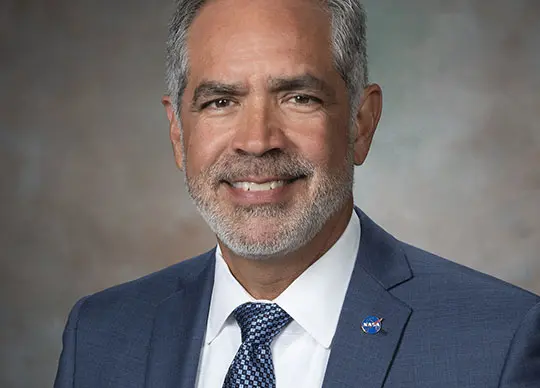
David McBride, director of NASA’s Armstrong Flight Research Center in California, has announced plans to retire on June 30 after 35 years of service to the agency. He began his career at NASA as an intern.
During McBride’s tenure as director, the center completed the flight evaluation of the X-48B/C hybrid wing body experimental aircraft and demonstrated the Orion spacecraft’s launch abort system.
“David’s contributions in aviation, science, and exploration have strengthened our agency’s missions and improved the lives of people throughout our country — and will for generations to come,” said NASA Administrator Bill Nelson. “Individuals at the beginning of their career at NASA – and members of the Artemis Generation who dream of one day working here – will be inspired by David, knowing their work can also lead to a lifetime of service to this storied agency. I wish him and his family all the best in his retirement.”
While studying electrical engineering at the University of New Mexico, McBride joined the NASA family as a cooperative education student, specializing in digital flight control systems analysis. His technical assignments included serving as chief engineer for the X-33 Extended Test Range and as lead flight systems engineer for the X-29.
Before his appointment as director in 2010, McBride served as acting center director, deputy center director, and associate director for programs and projects, where he oversaw Armstrong Flight Research Center’s portfolio supporting exploration, science, and aeronautics.
Upon McBride’s retirement, Deputy Center Director Brad Flick will serve as acting center director. Flick began his career at the Dryden Flight Research Center, now Armstrong Flight Research Center, in 1986 as a flight systems engineer on the F/A-18 High Alpha Research Vehicle project. The agency also will soon start the formal process to identify a successor and will announce a selection later.
Glenn Research Center Updates
In addition to announcing McBride’s retirement Monday, NASA leadership also has selected Dr. Jimmy Kenyon to serve as the acting center director and Dawn Schaible as acting deputy center director for NASA’s Glenn Research Center in Cleveland effective June 17. The agency continues the national search and open competition to make a permanent selection for the Glenn center director position.
Kenyon currently serves as director of the Advanced Air Vehicles Program in the Aeronautics Research Mission Directorate at NASA Headquarters in Washington. He supports the mission directorate and its leadership in a broad range of activities, including strategic and program planning, budget development, program review and evaluation, and external coordination and outreach. Before joining NASA, Kenyon worked with Pratt & Whitney, where he held leadership roles in business development, program management, and engineering, including serving as executive director of advanced programs and technology. Prior to working at Pratt & Whitney, Kenyon served 17 years as a civilian in the Department of Defense, including six years in the Office of the Secretary of Defense.
Schaible currently serves as the director of the Engineering Directorate at NASA’s Langley Research Center in Hampton, Virginia. Previously, she served as the NASA deputy chief engineer at Headquarters, where she helped lead the implementation of the Office of the Chief Engineer’s role in providing policy direction, oversight, and assessment for the NASA engineering and program management communities. Dawn spent 18 years at NASA’s Kennedy Space Center in Florida before joining Langley, serving in several lead engineering positions for the space shuttle and International Space Station Program.
The agency previously announced that Dr. Marla Pérez-Davis, director of NASA Glenn, will retire in June.
“I’m incredibly thankful to Brad, Jimmy, and Dawn for stepping into these acting roles and continuing their decades of distinguished service to our agency. Each of these individuals will help ensure a seamless experience at both NASA centers while we work through the process to identify new leadership at Armstrong and Glenn,” said Nelson





